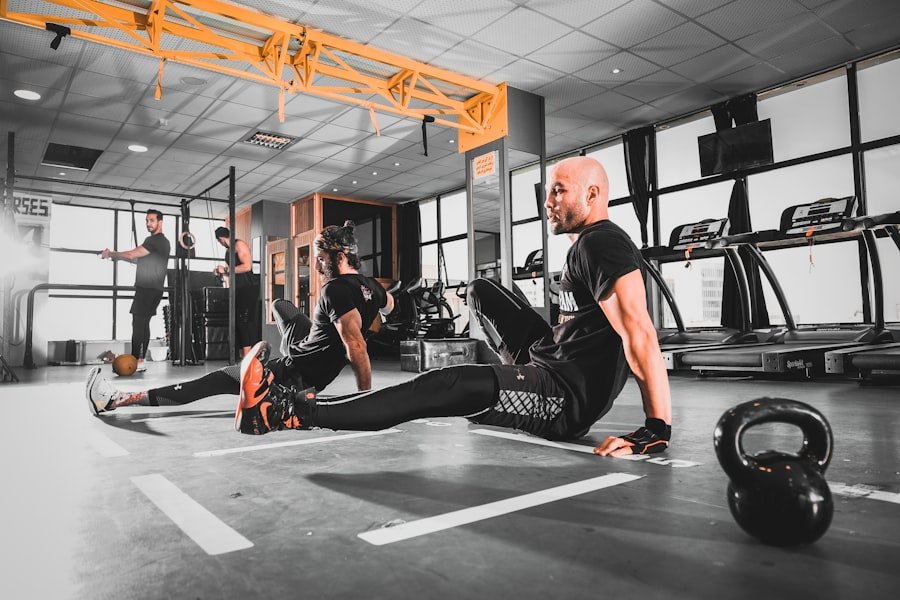Understanding fat loss is crucial for maintaining a healthy body weight and overall well-being. Excess fat can lead to a variety of health issues, including heart disease, diabetes, and certain types of cancer. By understanding the science behind fat loss and the factors that can impact it, individuals can make informed decisions about their diet and exercise routines to effectively shed unwanted fat.
Key Takeaways
- Understanding the science of fat loss is crucial for effective weight management.
- Genetics play a role in fat loss, but lifestyle factors can still make a significant impact.
- Hormones can affect fat loss, particularly in women during menopause.
- Losing belly fat can be challenging, but a combination of diet and exercise can help.
- Thigh and hip fat can also be stubborn, but targeted exercises and a healthy diet can make a difference.
Understanding the Science of Fat Loss
Fat loss occurs when the body burns more calories than it consumes. This creates an energy deficit, causing the body to tap into its fat stores for fuel. The process of fat loss is regulated by the metabolism, which is the rate at which the body converts food into energy. A higher metabolism means that the body burns calories more efficiently, making it easier to lose fat.
Calories play a crucial role in fat loss. To lose weight, individuals must consume fewer calories than they burn. This can be achieved through a combination of diet and exercise. It's important to note that not all calories are created equal. Foods that are high in sugar and unhealthy fats can contribute to weight gain, while foods that are high in protein and fiber can help promote fat loss.
The Role of Genetics in Fat Loss
Genetics can play a significant role in an individual's ability to lose fat. Some people may have a genetic predisposition to store more fat or have a slower metabolism, making it more challenging for them to lose weight. Understanding one's genetic makeup can help individuals tailor their diet and exercise routines to maximize fat loss.
Genetic testing can provide valuable insights into an individual's unique genetic profile and how it may impact their ability to lose fat. By identifying specific genetic variations related to metabolism and fat storage, individuals can make targeted lifestyle changes to overcome any genetic obstacles they may face.
The Impact of Hormones on Fat Loss
Hormones also play a crucial role in fat loss. Hormonal imbalances can make it more difficult for the body to burn fat and can lead to weight gain. For example, high levels of the stress hormone cortisol can promote fat storage, particularly in the abdominal area.
Maintaining hormone balance is essential for effective fat loss. This can be achieved through a combination of healthy eating, regular exercise, stress management, and adequate sleep. Certain foods and lifestyle factors can help regulate hormones and promote fat loss, while others can disrupt hormone balance and hinder progress.
The Challenge of Losing Belly Fat
Belly fat is often considered the most stubborn type of fat to lose. This is because belly fat, also known as visceral fat, is located deep within the abdominal cavity and surrounds vital organs. Visceral fat is metabolically active and produces hormones that can increase the risk of various health conditions.
To effectively lose belly fat, individuals should focus on a combination of diet and exercise. A diet rich in whole foods, such as fruits, vegetables, lean proteins, and healthy fats, can help reduce belly fat. Incorporating regular cardiovascular exercise and strength training can also help burn calories and build muscle, leading to a reduction in belly fat.
The Struggle with Thigh and Hip Fat

Thigh and hip fat can be particularly challenging to lose, especially for women. This is because these areas tend to store more fat due to hormonal factors. Estrogen promotes fat storage in the hips and thighs, making it harder to shed excess weight in these areas.
To target thigh and hip fat, individuals should incorporate exercises that specifically target these areas into their workout routine. Squats, lunges, and hip thrusts are effective exercises that can help tone and strengthen the muscles in the thighs and hips. Additionally, maintaining a healthy diet that is low in processed foods and high in nutrient-dense options can aid in reducing overall body fat.
The Difficulty of Losing Arm Fat
Arm fat, particularly in the upper arms, can be challenging to lose. This is because the arms are a common area for the body to store excess fat. Additionally, genetics and hormonal factors can contribute to the accumulation of fat in this area.
To reduce arm fat, individuals should incorporate exercises that target the muscles in the arms, such as bicep curls, tricep dips, and push-ups. These exercises can help tone and strengthen the muscles, leading to a reduction in arm fat. Additionally, maintaining a healthy diet and engaging in regular cardiovascular exercise can aid in overall fat loss.
The Stubbornness of Back Fat
Back fat can be particularly stubborn to lose, as it is often one of the last areas to see fat loss progress. This is because back fat is typically stored in the upper back and around the bra line, where it can be difficult to target with exercise alone.
To reduce back fat, individuals should focus on a combination of strength training exercises that target the back muscles, such as rows and lat pulldowns. Additionally, incorporating cardiovascular exercise and maintaining a healthy diet can aid in overall fat loss and contribute to a reduction in back fat.
The Battle with Love Handles
Love handles, also known as muffin tops, are another common area for excess fat storage. Love handles are located on the sides of the waist and can be particularly stubborn to lose.
To target love handles, individuals should incorporate exercises that engage the oblique muscles, such as side planks and Russian twists. These exercises can help tone and strengthen the muscles in the waist area, leading to a reduction in love handles. Additionally, maintaining a healthy diet that is low in processed foods and high in nutrient-dense options can aid in overall fat loss.
The Resistance of Inner Thigh Fat
Inner thigh fat can be particularly resistant to fat loss. This is because the inner thighs are a common area for the body to store excess fat, especially in women.
To reduce inner thigh fat, individuals should incorporate exercises that target the muscles in the inner thighs, such as sumo squats and inner thigh lifts. These exercises can help tone and strengthen the muscles, leading to a reduction in inner thigh fat. Additionally, maintaining a healthy diet and engaging in regular cardiovascular exercise can aid in overall fat loss.
The Persistence of Visceral Fat
Visceral fat, also known as belly fat, is located deep within the abdominal cavity and surrounds vital organs. This type of fat is metabolically active and produces hormones that can increase the risk of various health conditions.
To effectively lose visceral fat, individuals should focus on a combination of diet and exercise. A diet rich in whole foods, such as fruits, vegetables, lean proteins, and healthy fats, can help reduce visceral fat. Incorporating regular cardiovascular exercise and strength training can also help burn calories and build muscle, leading to a reduction in visceral fat.
Understanding fat loss is essential for maintaining a healthy body weight and overall well-being. By understanding the science behind fat loss and the factors that can impact it, individuals can make informed decisions about their diet and exercise routines to effectively shed unwanted fat. Whether it's belly fat, thigh and hip fat, arm fat, back fat, love handles, inner thigh fat, or visceral fat, there are effective strategies for losing each type of fat. By incorporating targeted exercises, maintaining a healthy diet, and addressing any underlying genetic or hormonal factors, individuals can achieve their fat loss goals and improve their overall health.
If you're wondering where the hardest place to lose fat is, you might find this article on the blog of US Hwa Rang Kwan interesting. It discusses the stubborn fat deposits in the abdominal area and provides insights into how to effectively target and reduce belly fat. Check it out FAQs
The hardest place to lose fat varies from person to person, but generally, it is the abdominal area, also known as the belly fat. Belly fat is hard to lose because it is made up of visceral fat, which is located deep within the abdominal cavity and surrounds vital organs. This type of fat is metabolically active and releases hormones that can affect the body's metabolism. Belly fat is associated with an increased risk of several health conditions, including type 2 diabetes, heart disease, high blood pressure, and certain types of cancer. Effective ways to lose belly fat include a combination of a healthy diet, regular exercise, and stress management techniques. Specific exercises that target the abdominal muscles, such as crunches and planks, can also help. Spot reduction, or targeting a specific area of the body for fat loss, is not effective. To lose belly fat, a combination of overall weight loss and targeted exercises is necessary. Foods that can help lose belly fat include those that are high in fiber, protein, and healthy fats, such as fruits, vegetables, whole grains, lean meats, nuts, and seeds. Avoiding processed foods and sugary drinks can also help.What is the hardest place to lose fat?
Why is belly fat hard to lose?
What are the health risks associated with belly fat?
What are some effective ways to lose belly fat?
Can spot reduction help lose belly fat?
What are some foods that can help lose belly fat?





